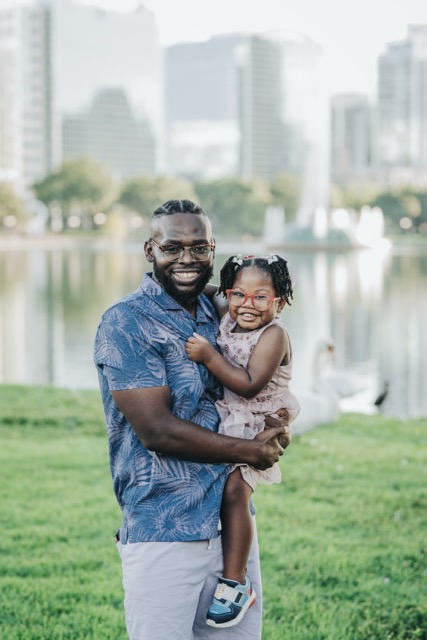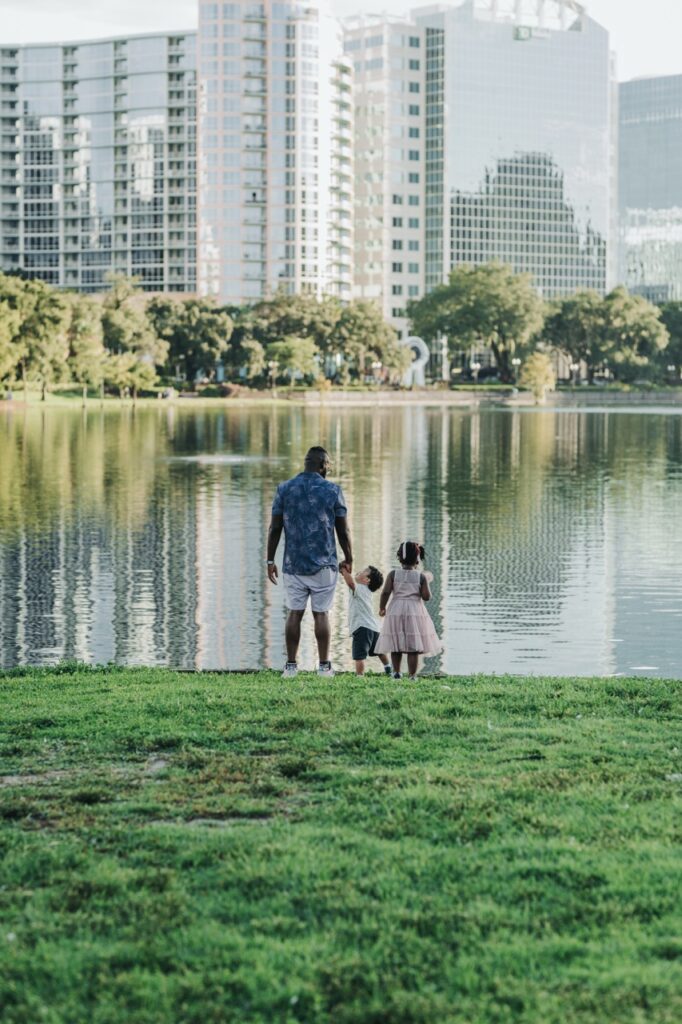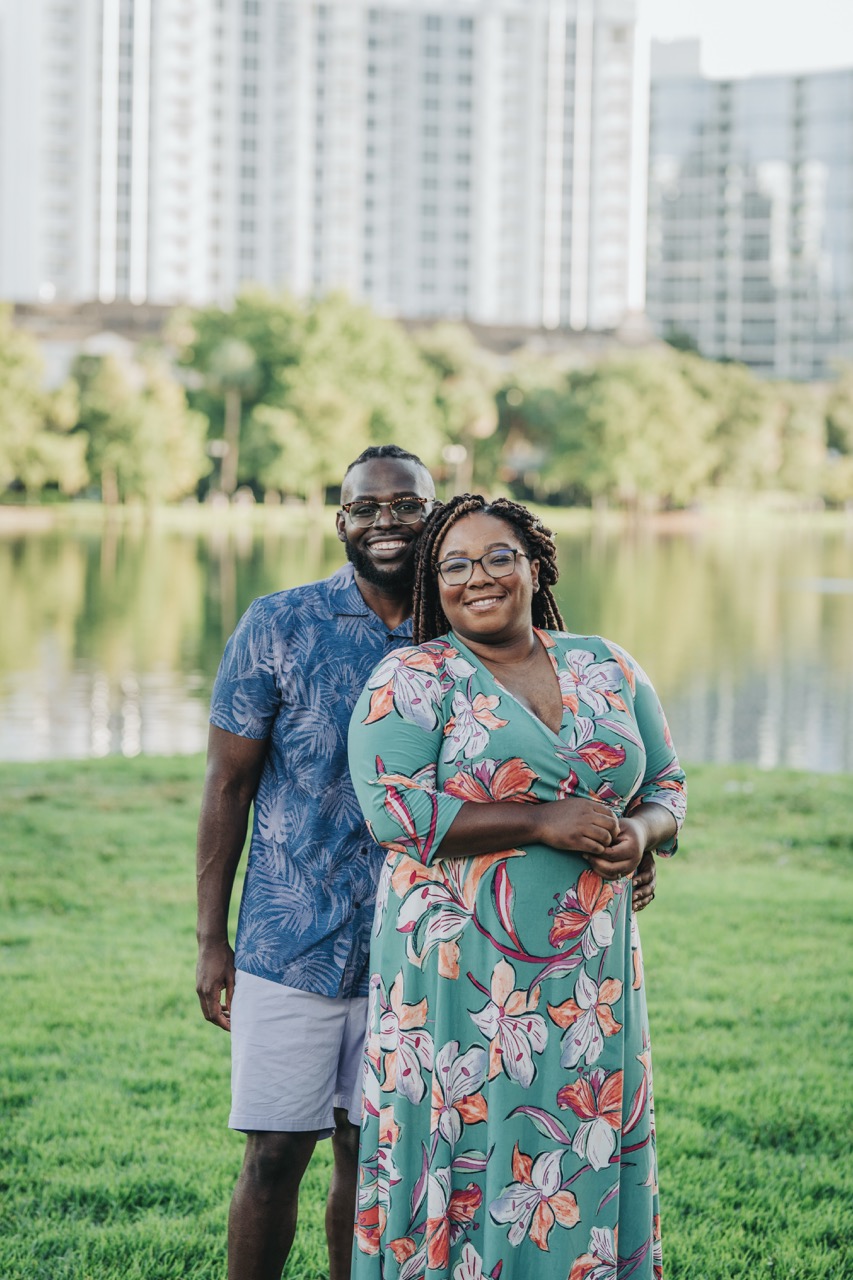The Fayette Family’s Journey Update
How Love, Faith, and The Bair Foundation Transformed Their Family Story
Fostering can bring transformative changes, not just for the children, but for the families who open their hearts and homes. It’s a journey of love, patience, and intentional care that can breathe life into a child who has experienced hardship. Often, these changes are tangible—captured in the expressions and energy of the children as they begin to feel safe, valued, and loved. It’s remarkable to witness how a nurturing environment can restore hope and joy, as shared by a foster parent reflecting on the visible difference that love and stability made in their foster children’s lives: Here’s how the Fayette’s have done just that.
The Fayette’s partnership with the Bair Foundation started in 2020. They adopted their daughter this past May and are starting the process to adopt their son now. Their amazing story has been memorialized in many ways, one of them is their tradition of taking family photos.
Why This Tradition Matters
For many foster children, being included in family traditions like photo sessions is a way to feel seen, valued, and truly part of a family. Something as simple as snapping a picture can symbolize belonging and permanence in a world that often feels uncertain.
Whether it’s the subtle softening of their features or the unmistakable sparkle of joy in their eyes, these moments captured on camera tell a story of hope, healing, and transformation. It’s a beautiful reminder of what fostering is all about—changing lives, one child at a time.
When a child enters a foster home, their journey of healing begins in many ways—but the Fayette’s unique and heartwarming tradition captures this transformation. They explained how taking family photos is more than just a way to document memories; it’s a testament to a child’s growth and healing.
“When kids come into our home, one of the first things we do is take a family picture with them. It’s our way of saying, ‘You’re part of this family now, and we want you to know that.’ These photos aren’t just pictures—they’re a statement that they belong.”
Over time, these photos tell a powerful story.
 “A few months down the road—two or three months—you can look back at those first pictures and see the difference in them. It’s incredible. Their features start to change. You can actually see the neglect fade away. It’s not just physical, although sometimes it is. It’s in their eyes. There’s a light that wasn’t there before. You can feel the change in them.”
“A few months down the road—two or three months—you can look back at those first pictures and see the difference in them. It’s incredible. Their features start to change. You can actually see the neglect fade away. It’s not just physical, although sometimes it is. It’s in their eyes. There’s a light that wasn’t there before. You can feel the change in them.”
Wanick described the profound impact of watching a child blossom in a loving and supportive environment:
“When kids are loved, encouraged, empowered, and engaged every day, they begin to transform. It’s amazing to see. We recently took family fall photos, and they were beautiful. Just looking at those pictures, you could see how far the kids had come in such a short time.”
These family photos serve as a visual reminder of the resilience of foster children and the incredible power of love, stability, and connection. For this Bair family, the photos are more than keepsakes—they are proof that change is possible, and that every child deserves a chance to thrive.
Preparing for “Forward Home”: A Foster Parent’s Mission
For foster children, the concept of “home” can often feel uncertain or out of reach. But for one foster parent, providing a sense of home is not just about the present—it’s about preparing children for a brighter future, wherever life may take them.
“Home. I need to give them this here and now before they go forward home.”
Wanick’s perspective on fostering goes beyond temporary care. It’s rooted in the belief that the time spent in their home should have a lasting impact.
“The reason I say ‘forward home’ is because we believe in our house that the way you come is not the way you go back. You go forward. You go back changed.”
This philosophy guides how they care for every child who walks through their door. It’s not just about meeting their needs in the moment; it’s about equipping them with the tools, love, and confidence to face whatever comes next.
“Every child that comes into our home, we are working to prepare them to go forward, just in case.”
The phrase “just in case” acknowledges the uncertainty that often surrounds foster care. While some children may return to their biological families or find permanent homes through adoption, others face unknown futures. For the Fayette’s, the goal is to ensure that every child leaves stronger, more resilient, and better prepared for their journey ahead.
Why “Forward Home” Matters
The idea of “forward home” is a powerful reminder of the transformative potential of fostering. It’s about more than providing shelter; it’s about helping children heal, grow, and gain the tools they need to thrive.
Every foster child deserves to feel loved, supported, and valued—not just for the time they spend in care, but for their entire future. And as this foster parent beautifully demonstrates, fostering is about creating a foundation for children to step into that future with hope and strength. That future involves a lot of nurturing relationships with the bio families when reunification is possible. The Fayette’s are well versed in the trying efforts it sometimes calls for.
Bridging the Gap: How Communication with Bio Parents Can Change Lives
The relationship between foster parents and biological parents is often fraught with tension, misunderstanding, and heartbreak. Fayette’s recount shows how opening a line of communication can lead to healing—not just for the children, but for everyone involved.
“Her heart was changed.”
Wanick recounted how Amara first reached out to the biological mother of their foster children. It wasn’t an easy step, and at first, he was against the idea, but she persisted. Sending a simple card with a kind message: “Hey, I was just thinking about you. If you need anything, let us know.”
That small gesture opened the door to something unexpected.
“Once we established a line of communication directly, her voice started getting softer. She began to see things from our perspective.”
Over time, the biological mother began to recognize the Fayette’s role in helping her children thrive.
“She realized we were just trying to prepare them to be young men in society. She came from a background of drug use and abuse, and she understood—her kids needed a positive male role model, and she didn’t have that. She saw that consistency was what they needed, and she appreciated that we could provide it.”
This shift in perspective allowed them to work together for the children’s benefit.
“We invited her to their basketball games, baseball games, and other events. She came to some of them, and it was nice for all of us.”

Two Sides of the Coin
Navigating the relationship with biological parents is a delicate balance.
“On one side, you don’t want to talk to them because you feel like they’re not doing anything right to fix what’s going on. But on the other side, your heart just breaks for them, and you say, ‘Hey, what do you need? Clothes? Groceries? Let me help you.’”
The Fayette family has been on both sides of that spectrum, good bio families and really tough ones, but they credit their success in these situations to the unwavering support of The Bair Foundation.
“Bair has been incredible. If we were in a place where we needed privacy, they protected us. If we wanted to open a line of communication, they supported us. Our caseworkers have been amazing—they’ve been such a strong support for me and my wife.”
A Message for Future Foster Parents
To foster parents who may feel unsure about navigating these relationships, Wanick offers these words of encouragement:
“Bair has your back. You’re not out there alone. If you’re thinking about fostering, go with Bair. I am proud to say I’m a Bair affiliate—they’ve been amazing.”
Raising Young Men: The Power of Positive Male Role Models in Foster Care
For many foster children, particularly young men, having a consistent, positive male role model can be life changing. Wanick shared how he is intentional about equipping the boys in his care with lessons, values, and skills that will shape their future—whether they stay with him forever or only for a season.
“We’re going to have father-son days so they can know this is how a gentleman sits. This is how a gentleman dresses. We don’t sag our pants here; we wear them at our waist. Matter of fact, we’re going to my tailor. This is how a suit is supposed to fit.”
Wanick is passionate about teaching life skills many of these boys haven’t had the chance to learn.
“I’m giving them small things that I didn’t know growing up, things I wasn’t taught as a child. But now I get to teach them, so when they go forward home, they have something.”
These lessons extend far beyond appearances. They’re rooted in creating a strong foundation of identity and self-worth.
“We’ll sit at the dinner table together as a family and talk. We’ll pray together. We’ll read books together. It’s all family and growth over here because we’re preparing them to go forward. Whether they stay with us forever or just for a season, we want their lives to be impacted.”
Building Identity in a World Full of Noise
Foster children often hear harmful messages about themselves from the world around them—messages that can leave lasting scars. For this foster dad, combatting those lies is essential.
“I don’t know what the world is telling them at school, or what their friends are saying, but they’re going to learn who they are here before they go out there. The world is going to tell them a bunch of trash about who they are not. But in this house, they’ll know the truth.”
He emphasizes the power of words and affirmation to reshape a child’s perspective:
“You’re not dumb. You’re not worthless. You’re not a failure. You’re smart. You’re a reader of many books.”
This commitment to fostering a love for learning is evident in their home:
“We’ve got tons of books in this house—a library in the hallway, a small library right across from me with over 60 children’s books at different levels. Readers are leaders, so in this house, we’re going to read. We’re going to build knowledge and confidence.”
From Foster to Family
For the Fayette’s, the journey of fostering hasn’t just been about helping children heal—it’s about embracing them as their own.
“Notice I say my kids, because that’s a hurdle we had to get over when we became foster parents. These boys are my kids, and it’s my responsibility to prepare them for the world. The world is a crazy place, and I don’t want them to experience any of its trash.”
Through love, guidance, and intentionality, Wanick is showing these boys what it means to be strong, respectful, and confident men. It’s a legacy that will stay with them long after they’ve left his home—a gift they can carry forward into their own futures.
Become a Foster Parent Today: Love Fully, Hurt Beautifully
Fostering is not for the faint of heart. It requires vulnerability, resilience, and a willingness to give your all, knowing that goodbye may come sooner than you’d like. For the Fayette’s, the key to making a difference is simple: get attached.
“We used to say, ‘Those are our foster kids,’ but we had to stop. They’re not just foster kids—they’re our kids. Because if you treat them as foster kids, you’ll hold back. You’ll be afraid to love them fully, and they deserve so much more than that.”
When asked about the fear of getting too attached, his response is unflinching:
“Get attached. Yes, it’ll hurt when they have to go forward but get attached anyway. Don’t hold back. If you do, you’ll find yourself saying, ‘I don’t want to do this anymore. I don’t want to make this investment.’ But that’s not the way to love these kids. Let the hurt happen. Not all hurt is bad hurt—there’s good hurt, too. So, love them hard, and let them become a part of your heart.”
For this Bair family, that shift in mindset changed everything.
“We stopped saying, ‘That’s our foster child,’ and started saying, ‘That’s my son. That’s my daughter.’ People would ask, ‘Oh, I didn’t know you had kids!’ and I’d say, ‘Yeah, last week we had two, now we have four. We might have three next week.’ It throws people for a loop, but it also opens the door to talk about foster care and adoption. It’s a great conversation starter, and it always leads to something meaningful.”
At the heart of fostering is a simple truth: these children aren’t just temporary guests in your life—they’re part of your family for however long they’re with you. And that connection, that willingness to embrace them fully, leaves a mark that lasts a lifetime.
“That’s my son. That’s my daughter. And they call me that.”
Foster care is hard, messy, and at times heartbreaking. But it’s also transformative, beautiful, and filled with purpose. The journey may be brief or lifelong, but every moment matters. Love fully. Get attached. Let the hurt remind you that you gave your all—and that the impact of that love will carry on, even after they’ve gone forward.

become a foster parent through the bair foundation
Since 1967, The Bair Foundation has been committed to building strong children, strong families, and strong communities. It is through loving foster parents that children have a sense of belonging and a loving home.
We are doing all we can, but we can’t do it alone. The Bair Foundation is always seeking outstanding people to join our team. We will never stop fighting for the children who need someone to fight for them. Our children deserve a brighter future.
If you are interested in Becoming a Foster Parent, you can request no-obligation information about fostering through The Bair Foundation here and a team member will contact you directly.
Of the 23,000 children who age out of foster care each year, 20 percent become homeless.
Join us in our mission to help children in need before it’s too late.
Become a Foster parent